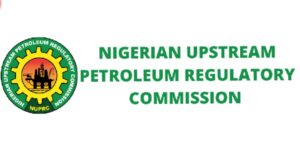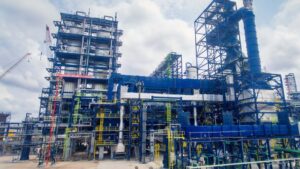
Seplat Energy incurs N2.6bn gas flare penalties In 2023
Seplat Energy paid N2.6 billion gas flare penalties between Q1 and Q3 2023. The company stated this in its financial statements for the first nine months of 2023.
According to the statement, Seplat Energy recorded higher gas flare penalties within the highlighted period as opposed to the N1.3 billion it paid during the same period in 2022.
A part of the statement read, “Operational & maintenance expenses relate mainly to maintenance costs, warehouse operations expenses, security expenses, community expenses, clean-up costs, direct staff costs, fuel supplies, and catering services.
“Also included in operational and maintenance expenses is a gas flare penalty of ¦ 2.6 billion (2022: N1.3 billion).”
In the financial statement, Seplat Energy also noted that lowering carbon intensity is a top priority and that they are actively working on a plan, called the flares-out roadmap, to reduce greenhouse gas emissions and enhance overall energy efficiency.
This strategy aims to eliminate routine flaring by the fourth quarter of 2024. During the reported period, the recorded carbon intensity was 26.0 kilograms per barrel of oil equivalent (kg/boe), which is higher than the 22.8 kg/boe recorded in the same period in 2022 due to increased production
The Sapele Flow Station significantly contributed to this higher carbon intensity. However, the installation of the Sapele AG compressors positions Seplat to significantly reduce absolute emissions (by around 40 percent) once gas off-take operations begin.
Also, another project set for completion in 2023 is at the Jisike Flow Station.
This forthcoming gas compression project is projected to capture an additional 9% of emissions by the end of the year.
Note that for the first nine months of 2023, Seplat Energy reported a substantial growth in gas revenue, which increased by 12.3% to $93.9 million compared to $83.7 million in the same period in 2022.
This growth is attributed to a blend of factors, including a slight uptick in realized gas prices and an increase in sales volume.
The average realized gas price climbed by 2.5 percent to $2.87 per thousand standard cubic feet (Mscf), while gas production saw a 3.2 percent rise to 31.8 billion standard cubic feet (Bscf), compared to 30.8 Bscf in the same period of 2022.
This improvement in the average realised gas price is a result of the higher negotiated gas prices with buyers during the period
In a broader view, the combined sales of oil and gas for the first nine months of 2023 showed a significant increase of 31.0% to $810.4 million from $618.6 million in the comparable period in 2022.
Adjusting for over lifts, which are excess oil cargoes loaded, the total sales of oil and gas stood at $682.5 million.
To elaborate, the rise in gas revenue can be primarily linked to both increased sales volume and a rise in the average realized gas price.
This indicates that Seplat Energy experienced a greater demand for their gas products and successfully negotiated higher prices with their buyers, thereby contributing to the overall boost in their revenue.
During the highlighted period, revenue from the gas segment of Seplat Energy’s business constituted 13 percent (2022: 16 percent) of the Group’s revenue.



